
Raffaello Sanzio da Urbino, known as Raphael, was one of three great masters of High Renaissance art along with Michelangelo and Leonardo da Vinci. He was a master in realistically depicting emotion in great detail which brought his paintings to life. Raphael is regarded as the ideal balanced painter and many of his paintings are considered cornerstones of Renaissance art. Here are 10 most famous paintings by this great Italian artist.
#10 The Marriage of the Virgin (Lo Sposalizio)
Year: 1504
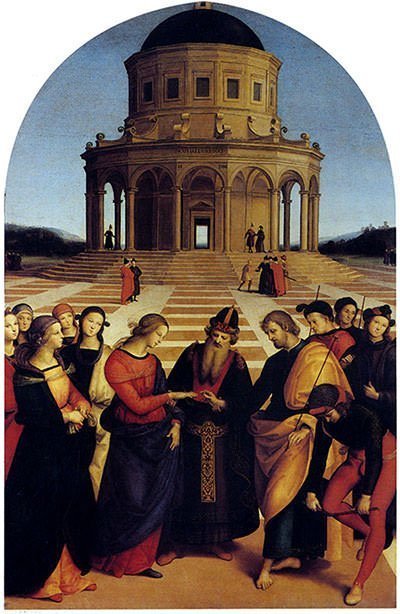
The Marriage of the Virgin (1504)
Based on the painting on the same theme by his teacher Pietro Perugino, Raphael’s The Marriage of the Virgin depicts a marriage ceremony between Mary and Joseph. Raphael’s developing style can be seen through this painting in which he surpasses his master. The temple in the background “is drawn in perspective with such evident care that it is marvellous to behold the difficulty of the problems which he has there set himself to solve.”
#9 Saint George and the Dragon
Year: 1506
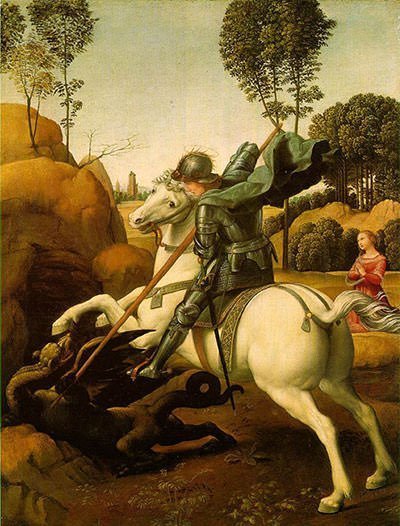
Saint George and the Dragon (1506)
This painting which depicts the well-known legend of Saint George slaying the dragon is perhaps the most famous work on the subject. It was one of the most popular paintings in the Imperial Hermitage Museum in Russia for a century and a half before it found its way to the National Gallery of Art in Washington D.C. where it remains as one of the prime attractions.
#8 La Donna Velata (The woman with the veil)
Year: 1515
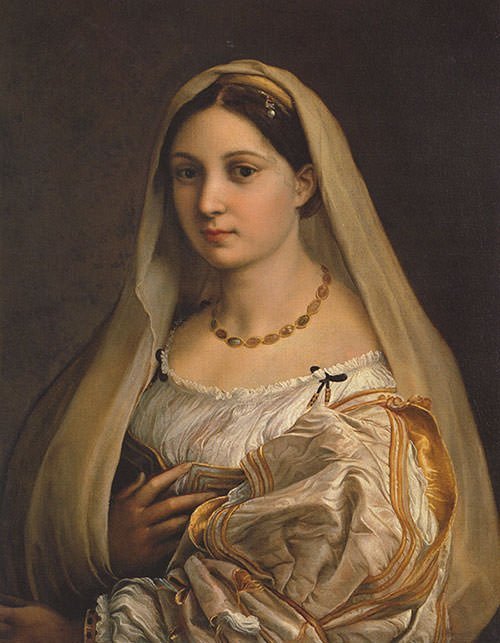
La Donna Velata (1515)
Raphael’s famous portrait La Donna Velata highlights the artist’s amazing ability to paint with such exquisite perfection that it appears to the viewer that he/she is staring not at a painting but at the real person. The woman’s apparel in the painting shows Raphael’s attention to detail which contributes in bringing the painting to life. The subject of the painting is Raphael’s mistress Margarita Luti. Little is known about her and that has added to the fame of the painting.
#7 Disputation of the Holy Sacrament (La Disputa Del Sacramento)
Year: 1510
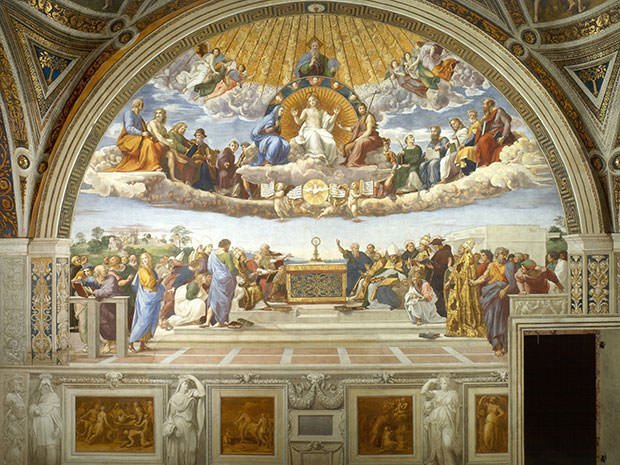
Disputation of the Holy Sacrament (1510)
Along with Michelangelo’s frescoes in the Sistine Chapel, Raphael’s frescoes in the Apostolic Palace are quintessential artworks of High Renaissance in Rome. Stanza della Segnatura (“Room of the Signatura”) is one of the four Raphael Rooms in the palace. It contains four grand paintings which epitomize Philosophy, Poetry, Theology, and Law; with Disputation of the Holy Sacrament representing theology. The painting, which shows the image of church spanning both earth and heaven, is one of the most well-known frescoes painted by Raphael.
#6 Portrait of Baldassare Castiglione
Year: 1515

Portrait of Baldassare Castiglione (1515)
One of the greatest portraits of the Renaissance, the painting depicts Raphael’s friend, the diplomat and humanist Baldassare Castiglione, who is considered a quintessential example of the High Renaissance gentleman. According to art historian James Beck “The Portrait of Baldassare Castiglione stands as a final solution for single male portraiture within the Renaissance style….” The painting had a lasting influence on future artists including Titian, Rembrandt and Matisse.
#5 The Triumph of Galatea
Year: 1514
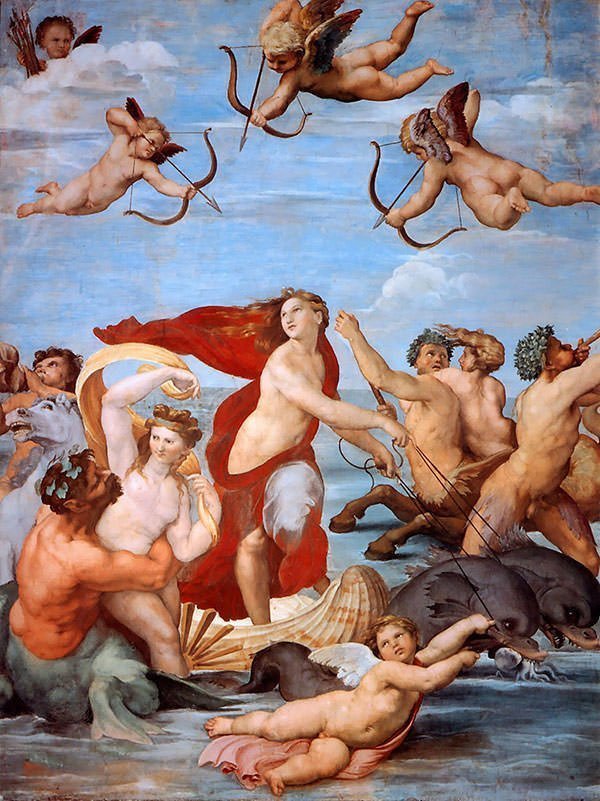
The Triumph of Galatea (1514)
In Greek mythology, the beautiful Nereid (ocean spirit) Galatea is a daughter of Poseidon. She had the misfortune of being married to the jealous one-eyed giant Polyphemus, who kills the peasant shepherd Acis on finding out that Galatea has fallen in love with him. Rather than painting the events of the story, Raphael painted the scene of Galatea’s apotheosis (elevation to divine status). The Triumph of Galatea is perhaps without parallel in its ability to evoke the spirit of classical antiquity and is considered one of the finest Renaissance paintings.
#4 La belle jardinière (Madonna and Child with Saint John the Baptist)
Year: 1507

La belle jardiniere (1507)
Raphael popularity during his time was not due to his major works but due to the numerous small pictures he painted of the Madonna and Christ Child. They remain hugely popular even today and the most famous of them is La belle jardinière (“The Madonna of the Beautiful Garden”). The painting which shows calm faced Madonna in an informal pose with Christ and the young John the Baptist has become a quintessential example of Raphael’s work.
#3 Transfiguration
Year: 1520
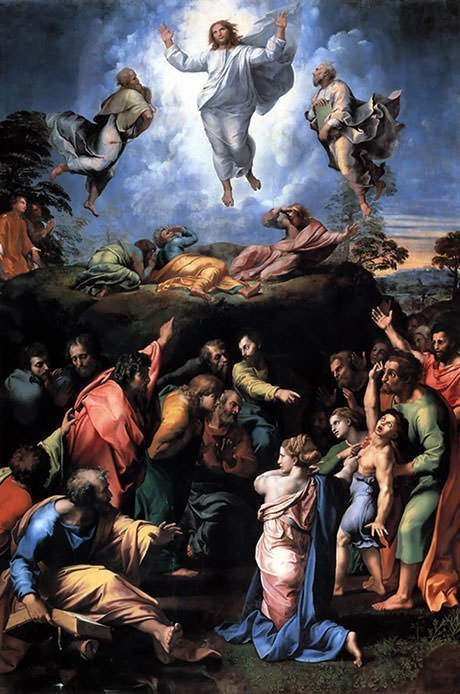
Transfiguration (1520)
Transfiguration is the last painting created by Raphael. It is divided into two distinct parts. The upper half of the painting shows the transfiguration of Christ with the prophets Elijah and Moses on either side of him. In the lower portion, the Apostles are unsuccessfully trying to rid the possessed boy of demons. The upper portion also shows the transfigured Christ ridding the possessed boy from evil. The painting can be interpreted as depicting the contrast between god and man; with the upper part pure and symmetrical, and the lower part dark and chaotic. To Napoleon, Raphael was simply the greatest of Italian artists and The Transfiguration his greatest work while Giorgio Vasari calls it Raphael’s “most beautiful and most divine” work.
#2 Sistine Madonna
Year: 1512
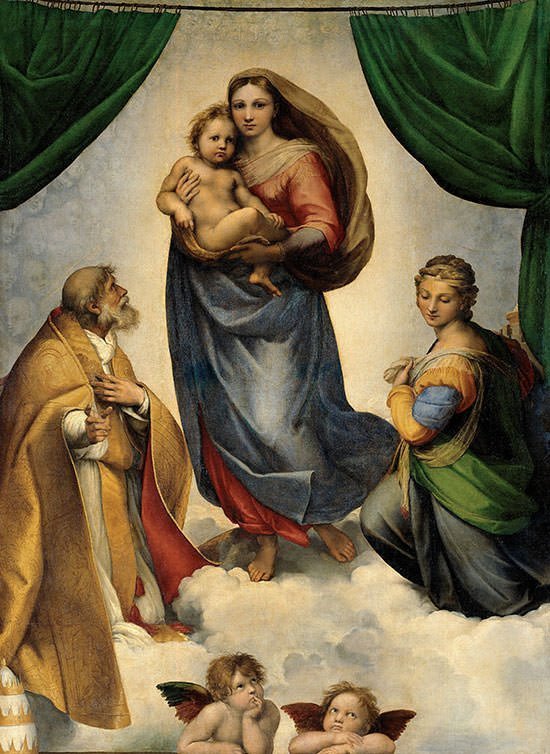
Sistine Madonna (1512)
Sistine Madonna depicts the Madonna, holding the Christ Child and flanked by Saint Sixtus and Saint Barbara. Also there are two winged cherubs beneath Mary who are perhaps the most famous cherubs depicted in any picture. Such is there popularity that there are many legends regarding how Raphael painted them and they have reproduced on everything from paper table napkins to umbrellas. Sistine Madonna is considered one of the finest paintings by many notable critics and it is especially popular in Germany where it “has been hailed as ‘supreme among the world’s paintings’ and accorded the epithet ‘divine'”.
#1 The School of Athens
Year: 1511
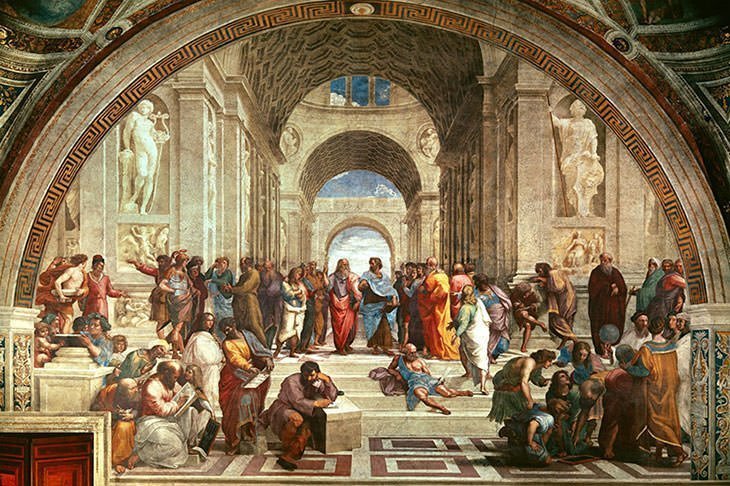
The School of Athens (1509)
Raphael’s masterpiece, The School of Athens, is one of the four main frescoes on the walls of the Stanze di Raffaello, in the Apostolic Palace in the Vatican. The four paintings epitomize Philosophy, Poetry, Theology, and Law; with The School of Athens representing Philosophy. Critics have suggested that every great Greek philosopher can be found among the 21 painted in the painting. However, apart from Plato and Aristotle, who are placed in the center of the scene, no one’s identity can be verified with certainty. The School of Athens is considered “the perfect embodiment of the classical spirit of the High Renaissance” and it is the most famous painting by Raffaello Sanzio da Urbino.
https://learnodo-newtonic.com/raphael-famous-paintings
Комментариев нет:
Отправить комментарий